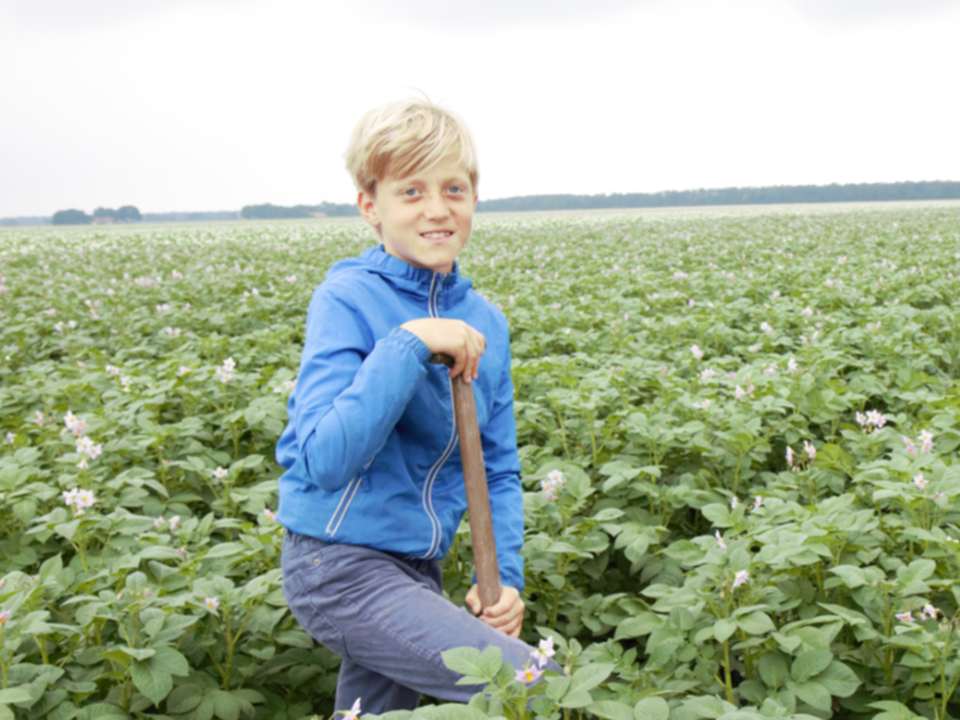MELHORAMENTO
PARA FINS DE RESISTÊNCIA
A PHYTOPHTHORA
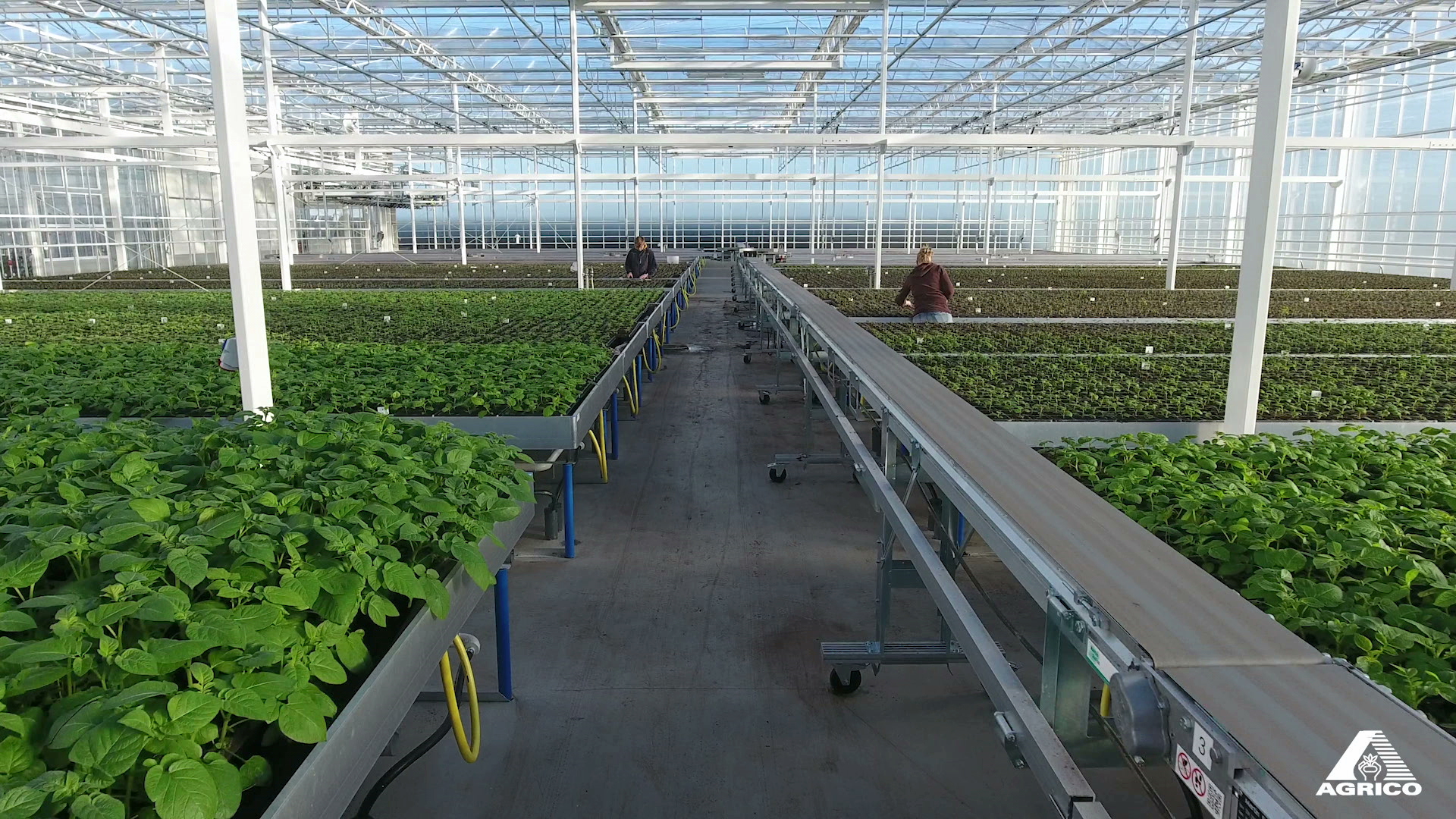
Melhoramento para fins de resistência
O melhoramento para fins de resistência foi iniciado no início do século XX. A Agrico Research iniciou o seu programa de melhoramento em busca de variedades resistentes a míldio nos anos 80. Nas espécies selvagens, foi encontrada uma fonte interessante de genes de resistência para a batata. As pessoas tornaram-se cada vez melhores na introgressão desses genes e na preservação das outras características atrativas da batata cultivada. As tecnologias avançadas permitiram aos obtentores classificar os resultados do seu trabalho de seleção e cruzamento natural de espécies vegetais como bons ou menos bons.
Gene R
Infelizmente, pouco tempo após as primeiras variedades serem introduzidas, a resistência foi destruída. O fungo conseguia superar as defesas naturais com demasiada facilidade. O melhoramento vegetal mudou da resistência baseada num gene de resistência (gene R) para uma combinação ótima de diferentes genes R que resultam num nível de resistência mais durável.
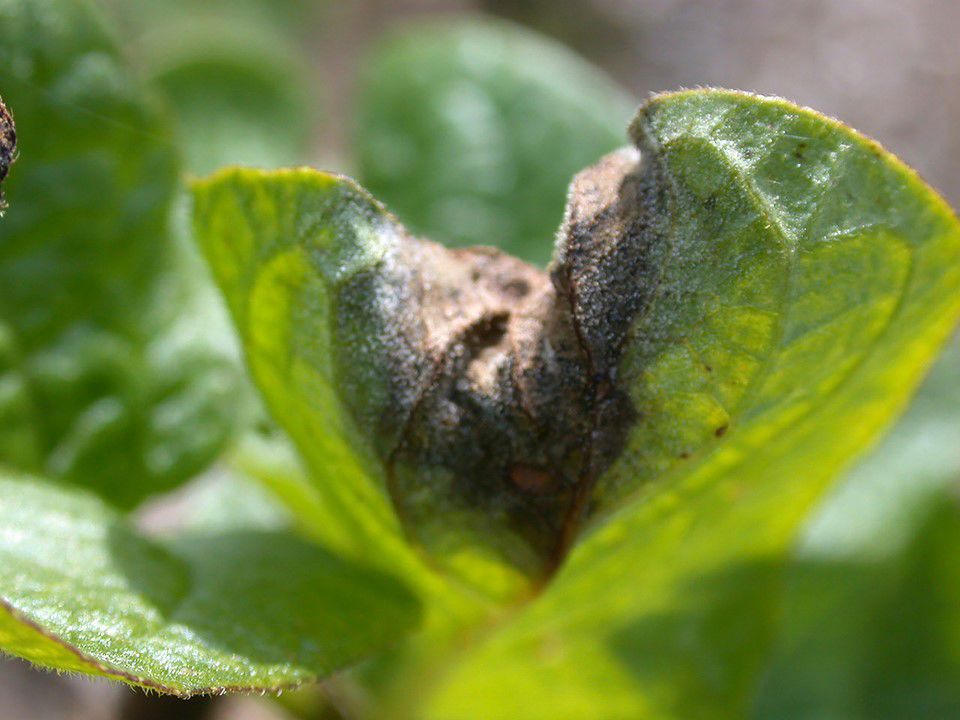
O fungo
O desafio para o obtentor é determinar a combinação ótima de genes R e todas as outras propriedades que são essenciais para a produção moderna de batata. Numa variedade resistente, todas as células que são afetadas pelo fungo morrerão muito rapidamente, impedindo o desenvolvimento do fungo.
Desativar o gene de resistência
Mais tarde na fase de maturação, a planta tende a desativar o gene de resistência. O resultado disso é que a resistência deixa de estar ativa, levando a que o fungo ainda tenha hipótese de afetar a cultura, especialmente na segunda metade do ciclo vegetativo. No cultivo biológico, isso significa que quando a resistência deixa de funcionar (suficientemente), queimar as folhas é a única opção que resta.
Resistência disponível
Durante o ciclo vegetativo, o fungo também se pode adaptar à resistência disponível através de mutações espontâneas, o que em última análise faz com que a boa resistência tenda a não se manter durante o ciclo. Isso é particularmente provável quando apenas está presente um único gene R. Tal não significa automaticamente que a resistência da variedade deixará de funcionar num ciclo vegetativo subsequente, quando uma outra estirpe de míldio estiver ativa ou quando a virulência do míldio for diferente. Tal explica o motivo pelo qual determinadas variedades Next Generation continuam a ser afetadas durante o ciclo vegetativo, sem alcançar a sua completa maturação.
Resistência versus agentes químicos
Atualmente, o fungo míldio é controlado sobretudo com produtos químicos que têm de ser repetidamente aplicados. Durante um ciclo vegetativo, as culturas têm de ser pulverizadas até 17 vezes, consoante a zona climática, a evolução do ciclo e a precocidade das variedades cultivadas.
Como resultado, o controlo do fungo míldio é responsável por até 10-20% dos custos totais de produção, com base nos custos dos produtos químicos e da sua utilização (máquinas, mão-de-obra e combustível). Em zonas onde os produtores não têm acesso a produtos químicos, os rendimentos são normalmente 25% inferiores aos da Europa do Norte ou dos EUA (Haverkort et al., 2009).
Apesar da disponibilidade de produtos químicos, o ciclo de pulverização pode ser perturbado pelas condições meteorológicas, deixando as culturas temporariamente desprotegidas. Em condições de elevada pressão de doença, o fungo míldio ainda pode levar à perda de culturas, uma vez que o ciclo vegetativo é encurtado e a capacidade de conservação dos tubérculos “imaturos” é reduzida. As perdas totais no rendimento global como resultado do míldio foram estimadas em 16% (Haverkort et al., 2009).
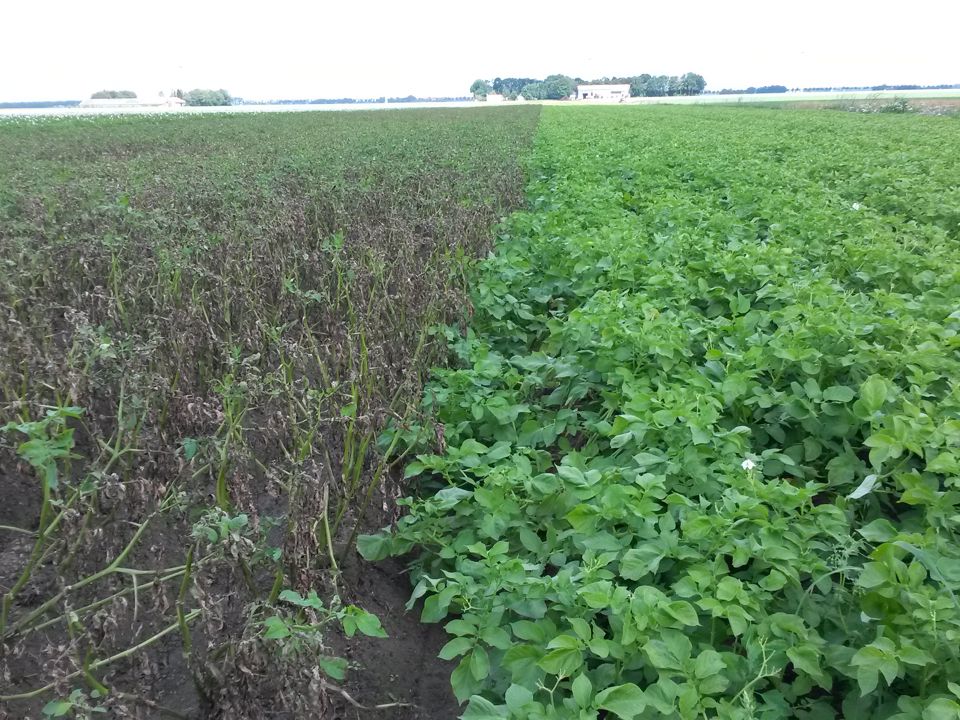
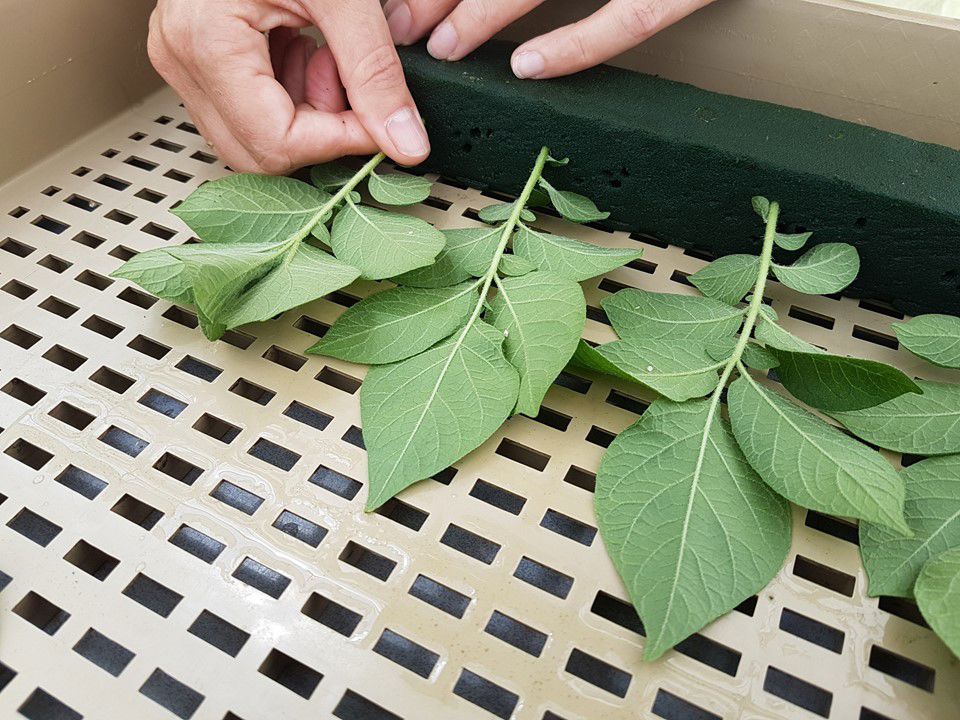
Deteção da resistência a míldio
A deteção da resistência a míldio pode ser efetuada utilizando folhas individuais de uma planta, o chamado ensaio de folhas destacadas, ou recorrendo a um ensaio com a planta inteira através de rastreio no campo. O ensaio de folhas é um teste laboratorial relativamente rápido, no qual as folhas individuais das plantas de estufa são inseridas em espuma floral (ou oásis).
A página inferior de cada folha é infetada com duas gotas de água com esporos de míldio e depois incubada em condições ótimas, ou seja, humidade elevada, luminosidade suficiente e uma temperatura ótima (17˚C). Após 6 dias, as folhas apresentam uma pequena mancha necrótica (= resistente) ou ficam cobertas por micélio (= suscetível).
Nova investigação
O desenvolvimento de novas variedades Next Generation é um processo contínuo. Para esse efeito, são utilizados e combinados vários genes de resistência. Prevê-se que este desenvolvimento assegure que as variedades ficam livres de míldio mais frequentemente e em várias zonas de cultivo até ao fim do ciclo vegetativo.
Para utilizar a resistência, não é importante qual a estirpe de míldio que está a afetar a cultura, mas sim se a mesma tem virulência em relação ao gene de resistência presente na variedade Next Generation cultivada.
Para otimizar a utilização das variedades, é por isso importante compreender que virulência ocorre em cada zona de cultivo e como se movimenta entre e dentro das zonas de cultivo e ao longo dos ciclos vegetativos.
Todavia, ainda se sabe pouco acerca do assunto, razão pela qual a Agrico Research recolhe isolados de míldio nas parcelas de terreno afetadas nos Países Baixos e, se possível, também noutros países, a fim de obter uma compreensão clara da virulência que está efetivamente presente.
A estratégia de longo prazo da Agrico Research é produzir variedades resistentes para todos os segmentos, que possam competir com as variedades existentes no mercado provenientes do cultivo convencional.
